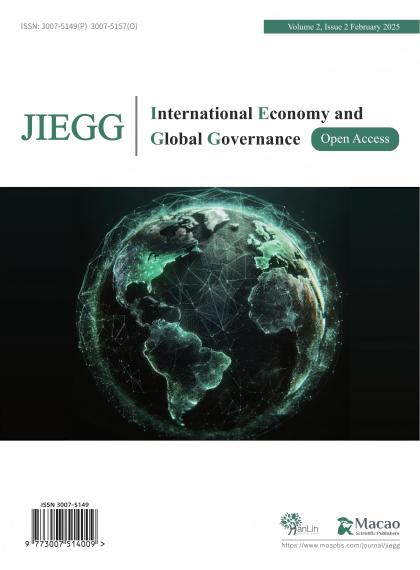-
Tang, S., Li, S., & Li, P. (2025). The impact of terrorist activities in Pakistan on the second phase of the China-Pakistan Economic Corridor and countermeasures. South Asia Research Quarterly, (1), 1–15.
-
Cheng, Y. (2015). A study on promoting the development of China-Pakistan trade under the background of the China-Pakistan Economic Corridor. South Asian Studies, (2), 94–101.
-
Wu, F. (2018). An exploration of China-Pakistan economic and trade relations under the Belt and Road framework. China Collective Economy, (34), 163–164.
-
Shi, Y. (2020). A study on the development of China-Pakistan trade. Cooperative Economy and Science & Technology, (17), 88–89.
-
Chu, X. (2020). Analysis and recommendations on China-Pakistan economic and trade cooperation under the Belt and Road Initiative. Belt and Road Reports (Chinese-English Edition), (5), 102–105.
-
Li, W. (2025). The threat of terrorism and counter-terrorism policy in Pakistan. Modern International Relations, (3), 78–94.
-
Su, X., Zhang, Y., Meng, X., et al. (2024). Early identification and development characteristics of potential landslides in the Hongza section of the China-Pakistan Economic Corridor using SBAS-InSAR. Remote Sensing Journal, (4), 885–899.
-
Sun, C. (2024). Opportunity window and energy development cooperation under the China-Pakistan Economic Corridor. World Economy and Politics Forum, (2), 90–104.
-
Zhu, Y., Zhu, X., & Tang, M. (2024). Study on the spillover path and coupling effect of security risks in the China-Pakistan Economic Corridor. Journal of Safety and Environmental Science, (9), 3541–3548.
-
Ye, H., Wu, J., & Zhang, Z. (2024). Pan-security phenomenon and the evolution of political and economic situations in South and Southeast Asia. Indian Ocean Economies Research, (1), 1–23,.
-
Liu, L. (2023). Ten-year construction achievements of the China-Pakistan Economic Corridor: Divergent evaluation and problem analysis. South Asia Studies, (4), 1–24.
-
Liu, L. (2023). The 10th anniversary of the China-Pakistan Economic Corridor: Process, system and implications. South Asia Quarterly, (4), 60–79.
-
Wei, Y., Fang, Z., & Tao, H. (2023). Comprehensive risk assessment of meteorological and hydrological disasters in the China-Pakistan Economic Corridor. Journal of Agricultural Engineering, (17), 107–115.
-
Su, X., Meng, X., Zhang, Y., et al. (2023). Research progress and prospects of geological hazards in the China-Pakistan Economic Corridor. Journal of Lanzhou University (Natural Science Edition), (5), 694–710.
-
Zhong, M., Jiang, G., Lu, Y., et al. (2023). Risk assessment and zoning of water supply services in the Pakistan section of the China-Pakistan Economic Corridor. Soil and Water Conservation Bulletin, (3), 225–233.
-
Liu, W., & Nie, R. (2023). The impact of Pakistan's national economic security on China-Pakistan economic and trade cooperation: Based on the background of the China-Pakistan Economic Corridor. Price Monthly, (5), 40–49.
-
Zhu, Y., Zhu, X., & Yu, Z. (2024). Dynamic robustness of cascade failures in the security risk network of the China-Pakistan Economic Corridor. Journal of Safety and Environmental Science, (1), 229–236.

